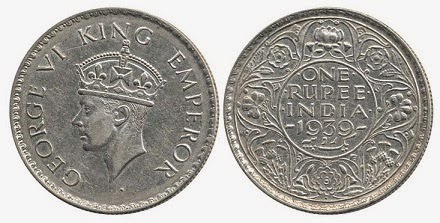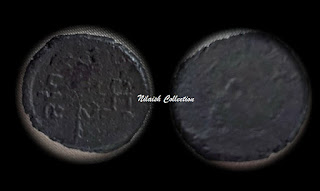Criticisms on my previous article on Kushan Kings Silver Patterns
This article is a result of discussions happened in Facebook groups:
Remarks on Critical Review of the Article
Facebook Link (Indian Coin Society Ancient World)
Post on my wall link (Positive comments were made so not included here).
Public Debate on Views and Comments of the Experts:
Collective Reply:
Mr Rishav Jain: He showed lab report of the coin with weight 3.5 grams [image attached below].
Remarks on Critical Review of the Article
Facebook Link (Indian Coin Society Ancient World)
Post on my wall link (Positive comments were made so not included here).
Public Debate on Views and Comments of the Experts:
P.S. Only noteworthy comments are discussed with regard to the criticism obtained. Let me first assure all that there is no malice intention in writing the previous article nor that I desire to sell the items to anyone! This article was written based on the curiosity developed from the subject coins and few literary evidences published before 1960 which suggested that I shall use the word, 'Pattern Coins' which deemed fit for the case. Let us first review the comments made by the experts.
Dr Shailen Bhandare (First Comment):
"These coins are not "patterns" but white metal cores made in 19th century to dupe collectors, particularly British officers for whom these were a collectible treat. We have a few pieces in our collection. I wonder how many are actually made of "silver" - none have been analysed. They are mostly cast (as the Farro coin illustrated in the article) but some are possibly die struck as well. To date, there has been only one genuine Kushan silver drachm known, and that is the unique silver coin of Vima Kadphises in the British Museum. There are of course Kushan silver coins from Sindh, but that's a regional series. Joe Cribb Ons would say more on these."
Collective Reply:
Dr. Bhandare is explaining that these coins are misleading and were forged during EIC time. As James Prinsep's Ariana Antiqua records these type of coins in 1841. No doubt they look old. Sir please take this kind opportunity to publish articles on the coins in the possession of British Museum or Ashmolean Museum.
Mr Joe Cribb (Oriental Numismatic Society, London) [First Comment]:
Some such pieces are ancient, but the cores of gold-plated forgery. In ancient times plating was done by wrapping a silver or copper core with gold foil or leaf. As this was not attached to the core it could easily be removed once the forgery was discovered.
Mr Joe Cribb (Oriental Numismatic Society, London) [Second Comment]:
Nilaish They re still fakes, if old one, definitely not patterns.
Collective Reply:
Thank you sir! Ok Sir...I have written a hypothesis...it is a matter of inquiry and debate... academically published material will bring truth and will set a new direction. We shall wait for some time ... however, anything which is older than 100 years is deemed antiquity in India. Merry Christmas! I am not passing a judgement anyway...just wrote a hypothesis ... which sees things in a new light and open for research. There are references that Whitehead also used pattern word for these coins...I am not the only one!
Mr Rishav Jain: He showed lab report of the coin with weight 3.5 grams [image attached below].
Lab Report
Lab Report suggests the metal composition of the coin. It is surprising that silver metal is composed of Silver (88.14%), Copper (8.49%), Zinc (0.11%), Iridium (0.002%), Lead (2.08%) and Chromium (0.27%). This silver metal alloy contains 6 metals and the composition suggests strange outcomes. If we know the metal composition of the other coins of the same period then it is highly unlikely that it is a British era counterfeit. However, further research on this subject is taken seriously.
My Reply:
Rishav Jain ji reports are very assuring. I never doubted on the coins...so published my hypothesis.
Dr Shailen Bhandare (second Comment):
Nilaish The cores might be silver but that does not prove the coins are 'genuine' or 'patterns' as you call them. They are either ancient forgeries, as Joe said above, or old (colonial period) forgeries. B N Mukherjee has written an entire book about them, but that does not mean they are legitimate in any sense.
My Reply:
Shailen Bhandare ji please wait...let me get something concrete before I would say something.
Mr Nikhil Bellarykar: name of B N Mukherjee book please?
Mr Jan Lingen's reply: Mukherjee, B.N. Kushana silver coinage Calcutta 1972.
Purushotham Reddy's reply: Nikhil Bellarykar available from Indian Museum, Kolkata.
Sanjeevkumar Shivlee Kumargupta's Comment: Good to see the discussion on the metal analysis of these coins. Some of you may find this Chapter 8 from the book helpful - Silver coins of the Gupta and Kshatarapa Kings is also covered here. Gupta Coin copies with Silver cores (some with traces of gold leaf still visible) are seen in the market from time to time - these are all copies from Gold dinaras and as they are silver core, these weigh 4.5-4.8 gm approx. (link).
Mr Arthur Needham's Comment:
Given that major work has been completed in recent times on Kushan type coins there are still a number of mysteries surrounding both the economics of the empire (despite excellent work by Muckerjee and others) and the coinage. The fact that the empire transitioned to what appears to be a gold standard placed it at odds with many of its neighbours who were technically for much of the time silver based. Being strategically placed in the major overland route between east and west the empire in its widest form (now is not the time for discussions on whether some of the states were ruled or perhaps some type of fiduciary) had major benefits in trading technically both north, south, east and west. This exposed them to essentially silver based economies for much of the time. There was profit to be made in the exchanging of silver for gold (either way) when the mints were centrally controlled. Exchange rates and a seigniorage charge would add to the coffers of the kingdom and the money changers. So we have a large but technically isolated, monetarily so, on a major trading route. Silver would have been needed for trade, simple. The finding of large quantities of apparently silver (or silver alloy) coins in various parts of the Kushan empire that maybe struck or cast that have caused concerns as to authenticity. However given the placement of the empire and the standard surrounding coinage types the finding are neither unreasonable in context nor unexpected on such a trade route. It would not be unreasonable also to expect that some of the silver based adjoining economies (and empires) independent, fiduciary or otherwise, would have copied the Kushan coinage style (technically exactly) and produced coins in silver. There is sufficient evidence available to show that this type of copying was reasonably prevalent at this time. An argument has been put forward that silver in the Kushan empire was in short supply. However production of metals from the general Rajasthan 'copper" belt area from antiquity up until the middle ages saw large quantities of silver being produced and this is without other sources in Afghanistan and west. If we long slightly earlier it was not usual and noted in recently retranslated texts that copper coins (and maybe other metals) were produced with a gold coating. If we look slightly later he is now absolute proof that mints existed side by side that produced both struck and cast coins. The ascertaining that coins in the Kushan style made of predominantly silver are either modern fakes or somehow forgeries is not tenable given the economics of the region and noting the geographic position of the Kushan empire. Trade both internal and external was booming. It was likely that hoards of such coins would be found and enough remain after pillaging for examination by the most modern methods until full quality control circumstances. To also see how well controlled the standing markets and marketplaces were in history in the greater subcontinent and the general regions several narratives have recently been presented. (and I am happy to say one or two senior commentators have remarked on their apparent Marxist style). The notion that huge quantities of fakes were made to fool the British indolent collectors is generally only sustainable in Kipling type (or a little early in Thackery type) fiction. Adequate methods of testing (gold coated or otherwise) existed . The British may have appeared dumb (often wilfully so at times) but stupid they were not, certainly not in a mass way. Notes are from internally published papers of the joint university metrology working group and have been previously formally published.
Replies:
My reply: Arthur thanks for the illuminating comment.
Mr Rishav Jain's Comment:
Nilash bhai as I'm a small dealer not a scholar nor an expert. Just want to know are all the coins which are in British museum or such other museums have the carbon testing data available of each and every coin? Also the coins which are only piece known in British museum or such important museums were dies for such coins made to produce single coin for museums only ?
Mr Arthur Needham's reply: Rishav Jain Sir, I think at this time that discussion is too early.
The comments are self explanatory and needs no elaboration.


